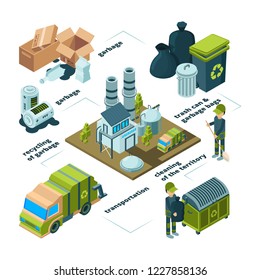Your Comprehensive Overview To Choosing The Correct Dumpster Dimension For Any Project
Your Comprehensive Overview To Choosing The Correct Dumpster Dimension For Any Project
Blog Article
Produced By-Finnegan Hahn
When starting a job that requires a dumpster, the dimension you choose can significantly influence its efficiency and cost-effectiveness. Imagine having the ideal container that suits all your waste without being exceedingly large or too small. It all starts with understanding the nuances of your project and selecting a dumpster size that straightens with your certain demands. So, before you decide, think about the factors at play to make certain a smooth waste administration process from start to finish.
Aspects to Take into consideration
When choosing the right dumpster size, there are a number of key aspects to think about.
First, consider the kind of waste you'll be dealing with. Various materials may call for differing amounts of room, so recognizing what you'll be putting in the dumpster is essential.
Next, assess just click the following web site of waste you anticipate to produce. If you undervalue the quantity, you may need to make multiple trips to throw away everything, which can be bothersome and pricey. On the other hand, renting out a dumpster that's also big can bring about unneeded expenses.
Furthermore, think about the area where the dumpster will be positioned. Guarantee there suffices space for the dumpster to be provided and grabbed with no obstructions.
Last but not least, consider any weight limitations that might apply. Going beyond the weight restriction can lead to added costs or even the refusal of service.
Dumpster Size Options
For selecting the appropriate dumpster dimension, it's necessary to have a good understanding of the available alternatives. Dumpster sizes normally range from 10 to 40 cubic lawns, with variations in between.
A 10-yard dumpster appropriates for small jobs like a garage cleanout or a small restoration. If you're tackling a medium-sized task such as a kitchen remodel or a basement cleanout, a 20-yard dumpster could be the right selection.
For larger tasks like a whole-house renovation or industrial building and construction, a 30 or 40-yard dumpster could be more suitable to accommodate the volume of waste created.
When deciding on a dumpster dimension, take into consideration the amount and sort of particles you expect to take care of. It's better to pick a somewhat bigger size if you're uncertain to prevent overfilling. Remember, it's even more cost-efficient to rent out a dumpster that fits your demands rather than needing to buy an extra one.
Matching Dimension to Job
Optimally matching the dumpster size to your task is vital for effective waste administration. To identify the right size, take into consideration the range and nature of your task.
For tiny house cleanouts or improvements, a 10-yard dumpster may be enough. related website are commonly 12 feet long and can hold around 4 pickup truck lots of waste.
For larger projects like renovating numerous areas or removing a large estate, a 20-yard dumpster might be more suitable. These are around 22 feet long and can hold about 8 pickup loads.
If you're tackling a significant building and construction job or commercial restoration, a 30-yard dumpster could be the best fit. These dumpsters are about 22 feet long and can suit regarding 12 pickup tons of particles.
Matching the dumpster dimension to your job guarantees you have adequate space for all waste materials without paying too much for extra capacity.
Conclusion
In conclusion, choosing the ideal dumpster size for your task is critical for efficient garbage disposal. By thinking about factors like the kind and amount of waste, area schedule, weight constraints, and budget restrictions, you can guarantee you have the ideal dimension dumpster for your requirements. See to it to match the dimension of the dumpster to the range and nature of your project to avoid overspending on unnecessary costs.
